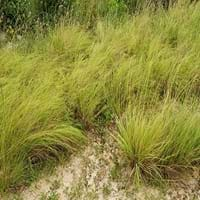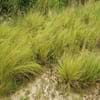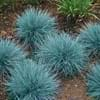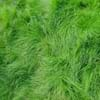Life Span
Perennial
Perennial
Type
Grass
Flowering Plants, Fruits, Trees
Origin
Eastern Africa, Southern Africa
Central America, Europe, North America
Types
Robusta blue, Robusta green, Curvula
Not Available
Number of Varieties
Not Available
Habitat
Cultivated Beds
Hedge, Scrubs, Woods
USDA Hardiness Zone
7-13
4-8
AHS Heat Zone
12 - 10
Not Available
Sunset Zone
4, 5, 6, 7, 8, 9, 10, 11, 12, 13, 14, 15, 16, 17, 18, 19, 20, 21, 22, 23, 24
Not Available
Habit
Clump-Forming
Not Available
Flower Color
Gray, Lavender
White
Flower Color Modifier
Bicolor
Not Available
Fruit Color
Gray Green, Silver
Yellow
Leaf Color in Spring
Green, Dark Green
Dark Green
Leaf Color in Summer
Light Green
Green
Leaf Color in Fall
Dark Green, Bronze
Brown, Green, Light Yellow
Leaf Color in Winter
Yellow, Dark Green, Bronze
Not Available
Leaf Shape
Grass like
Oblong
Plant Season
Summer, Fall, Winter
Summer
Sunlight
Full Sun
Full Sun, Partial shade
Type of Soil
Loam, Sand
Loamy
The pH of Soil
Acidic, Neutral, Alkaline
Neutral
Soil Drainage
Well drained
Well drained
Bloom Time
Late Summer, Early Fall
Fall, Summer
Tolerances
Drought
Drought
Where to Plant?
Ground
Ground
How to Plant?
Seedlings
Grafting, Seedlings, Transplanting
Plant Maintenance
Medium
Medium
Watering Requirements
Average Water Needs
Medium
In Summer
Lots of watering
Lots of watering
In Spring
Moderate
Moderate
In Winter
Average Water
Average Water
Soil pH
Acidic, Neutral, Alkaline
Neutral
Soil Type
Loam, Sand
Loamy
Soil Drainage Capacity
Well drained
Well drained
Sun Exposure
Full Sun
Full Sun, Partial shade
Pruning
Cut back old stems to the ground
Prune when plant is dormant, Remove dead or diseased plant parts
Fertilizers
Requires high amount of nitrogen
All-Purpose Liquid Fertilizer
Pests and Diseases
No serious insect or disease problems
Aphids, Curculio occidentis, Japanese Beetles, Leaf Rollers, Leafminer, Mites, Red blotch, sawflies, Scale, Stink bugs
Plant Tolerance
Drought
Drought
Flower Petal Number
Single
Single
Foliage Texture
Fine
Medium
Foliage Sheen
Matte
Matte
Attracts
Not Available
Not Available
Allergy
conjunctivitis, Pollen
Digestive Problems, Respiratory problems
Aesthetic Uses
Borders, Showy Purposes
Showy Purposes
Beauty Benefits
Not Available
Beautiful Skin
Environmental Uses
Erosion control
Food for birds
Medicinal Uses
No Medicinal Use
Anthelmintic, Antibacterial, Astringent, Hypnotic, Laxative, Refrigerant
Part of Plant Used
Leaves, Seeds
Fruits
Other Uses
Used as a grain, Used to make baskets, brooms, hats
Edible syrup, Jam, Jelly, Used As Food
Used As Indoor Plant
No
No
Used As Outdoor Plant
Yes
Yes
Garden Design
Bedding Plant, Container, Edging, Groundcover, Mixed Border, Rock Garden / Wall
Not Available
Botanical Name
ERAGROSTIS curvula
Malus sylvestris
Common Name
Weeping Lovegrass
European crab apple
In Hindi
Weeping Lovegrass
european crab apple
In German
Weinend lovegrass
Der Holzapfel, Europäischer Wildapfel
In French
Weeping lovegrass
Le Boquettier, le Pommier sauvage ou Pommier des bois
In Spanish
Pasto llorón
Malus sylvestris, el Manzano silvestre, manzano silvestre europeo
In Greek
κλάμα Lovegrass
Ευρωπαϊκή μήλο καβουριών
In Portuguese
chorando lovegrass
Malus sylvestris
In Polish
Płacząca Lovegrass
Jabłoń dzika
In Latin
Plorans Lovegrass
european crab apple
Phylum
Magnoliophyta
Magnoliophyta
Class
Liliopsida
Magnoliopsida
Clade
Angiosperms, Commelinids, Monocots
Angiosperms, Eudicots, Rosids
Tribe
Eragrostideae
Not Available
Subfamily
Chloridoideae
Not Available
Number of Species
Not Available
Not Available
Importance of Weeping Lovegrass and European Crab Apple
Want to have the most appropriate plant for your garden? You might want to know the importance of Weeping Lovegrass and European Crab Apple. Basically, these two plants vary in many aspects. Compare Weeping Lovegrass and European Crab Apple as they differ in many characteristics such as their life, care, benefits, facts, etc. Every gardener must at least have the slightest clue about the plants he wants to plant in his garden. Compare their benefits, which differ in many ways like facts and uses. The medicinal use of Weeping Lovegrass is No Medicinal Use whereas of European Crab Apple is Anthelmintic, Antibacterial, Astringent, Hypnotic, Laxative and Refrigerant. Weeping Lovegrass has beauty benefits as follows: Not Available while European Crab Apple has beauty benefits as follows: Not Available.
Compare Facts of Weeping Lovegrass vs European Crab Apple
How to choose the best garden plant for your garden depending upon its facts? Here garden plant comparison will help you to solve this query. Compare the facts of Weeping Lovegrass vs European Crab Apple and know which one to choose. As garden plants have benefits and other uses, allergy is also a major drawback of plants for some people. Allergic reactions of Weeping Lovegrass are conjunctivitis and Pollen whereas of European Crab Apple have Digestive Problems and Respiratory problems respectively. Having a fruit bearing plant in your garden can be a plus point of your garden. Weeping Lovegrass has no showy fruits and European Crab Apple has showy fruits. Also Weeping Lovegrass is not flowering and European Crab Apple is flowering. You can compare Weeping Lovegrass and European Crab Apple facts and facts of other plants too.





